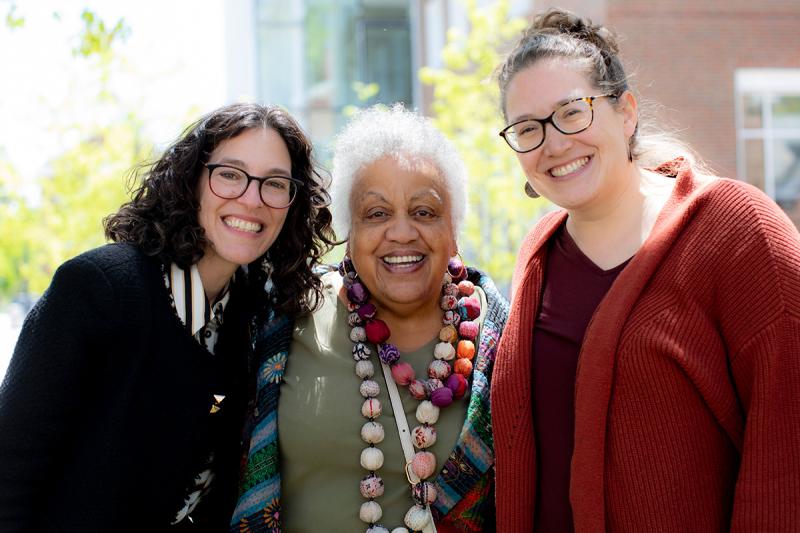In our day-to-day work at the Tuck Initiative on Workplace Inclusion, we speak with a lot of leaders across industries about just how much the modern workplace has changed in the past few years. Whether it’s a conversation about return-to-office policies, “quiet quitting,” the impact of generative AI, or employee burnout, it’s clear that leaders are navigating a lot that’s new. But for us, we’re deeply invested in a truly age-old problem: despite all these changes, women are still significantly underrepresented in leadership. So what can we do?
First of all, leaders—men and women—must acknowledge and address the ways their policies and cultures hold women back, both on a systems and individual level. There is a lot of talk about allyship these days; at the Initiative, we believe that true change requires a different approach.
But first, let’s define what an ally does. Allies are colleagues who take action to advocate on behalf of someone else. Many people believe that if every person from a marginalized group in an organization has a committed ally—someone who guards, protects, and stands with you as a colleague—then we will make progress and create better workplaces. It’s great to be an ally and it’s great to have an ally, but the research tells us that allyship is a long way from being a complete solution, because it’s too easy for allies to opt out when it isn’t convenient for them, or when being an ally threatens their power.

(from left) Ashley Zwick, executive director of the Tuck Initiative on Workplace Inclusion; Professor Ella Bell Smith, founder and faculty director of the Tuck Initiative on Workplace Inclusion; Kara Wakefield, program manager.
Allyship works best when there is reciprocity—when the task at hand creates an advantage for both parties. When reciprocity goes away, allies usually pull back. From their perspective, they’ve done all they can do to help the other person, and it’s no longer worthwhile (and may even be damaging) for them to use additional resources and credibility in service to the other person. Allies are often thinking, “What do I have to lose?”
Recent research has shown that performative allyship, or acting out one’s allyship as a way of gaining attention and popularity (such as hanging a rainbow flag to show support for the LGBTQ+ community while ignoring the concerns LGBTQ+ employees raise), is not effective in changing the status quo or truly addressing inequality in a meaningful way. In fact, performative allyship can have negative effects on disadvantaged groups because it sows skepticism and raises questions about the true sincerity of such “allies.” In short, it is a lot more self-serving than systems-changing.
This is where the concept of the co-conspirator comes in. Co-conspirators are more than allies because they don’t simply think about helping an individual, they focus on advancing a cause. They are change agents, with bigger hopes, who take bigger actions—which is necessary to create widespread and long-lasting change. When we think of co-conspirators, the phrase that comes to mind is that each party has “skin in the game.” They are in it for the long haul—right up until the mission or the task is accomplished. They’re not only willing to face consequences, but they expect to face consequences. Their strategy is connected to action and the process is about changing the system, and not simply supporting an individual. These are not simply work buddies, and in fact co-conspirators do not necessarily need to become friends. However, they do need to band together in their desire for greater equity.
Simply put, we don’t yet have enough top-down leadership or widespread cultural support to create inclusive workplaces, so the work falls on individual leaders to become co-conspirators.
— Ella Bell Smith and Ashley Zwick
If you’ve seen the blockbuster Barbie movie directed by Greta Gerwig, you know exactly what this looks like. Towards the end of the film when the Barbies all work together to deprogram every doll and take back Barbieland from the Kens, they are not simply allies, they are co-conspirators.
Another example of co-conspiratorship in action came out of the Obama White House in 2016, where women represented only one-third of the president’s group of senior aides and advisers. According to the Washington Post, “female staffers adopted a meeting strategy they called ‘amplification’: When a woman made a key point, other women would repeat it, giving credit to its author. This forced the men in the room to recognize the contribution—and denied them the chance to claim the idea as their own.”
One reason we don’t see more co-conspiratorship at work is that it runs counter to the way most modern workplaces have been organized, where there is room for only one winner. For lack of a better term, co-conspiratorship represents a true and authentic sisterhood where we let go of the beliefs, behaviors, and actions of the past to be able to truly move ahead for the advancement of all women.
[C]o-conspiratorship represents a true and authentic sisterhood where we let go of the beliefs, behaviors, and actions of the past to be able to truly move ahead for the advancement of all women.”
While the share of women CEOs of Fortune 500 companies reached an all-time high in 2023 at 10.6 percent, we are still nowhere close to gender parity. And the number of women of color CEOs of these companies is negligible, and still in the single digits. Simply put, we don’t yet have enough top-down leadership or widespread cultural support to create inclusive workplaces, so the work falls on individual leaders to become co-conspirators.
At the Tuck Initiative on Workplace Inclusion, we are focused on our strategy to ensure that all workplaces are enabling and empowering places for everybody. Through our podcast, blog, roundtables, and annual research soiree, we seek to convene leaders at all levels to discuss and debate the best approaches to achieve workplace inclusion. We hope that you will join us.
This story originally appeared in print in the winter 2024 issue of Tuck Today magazine.

